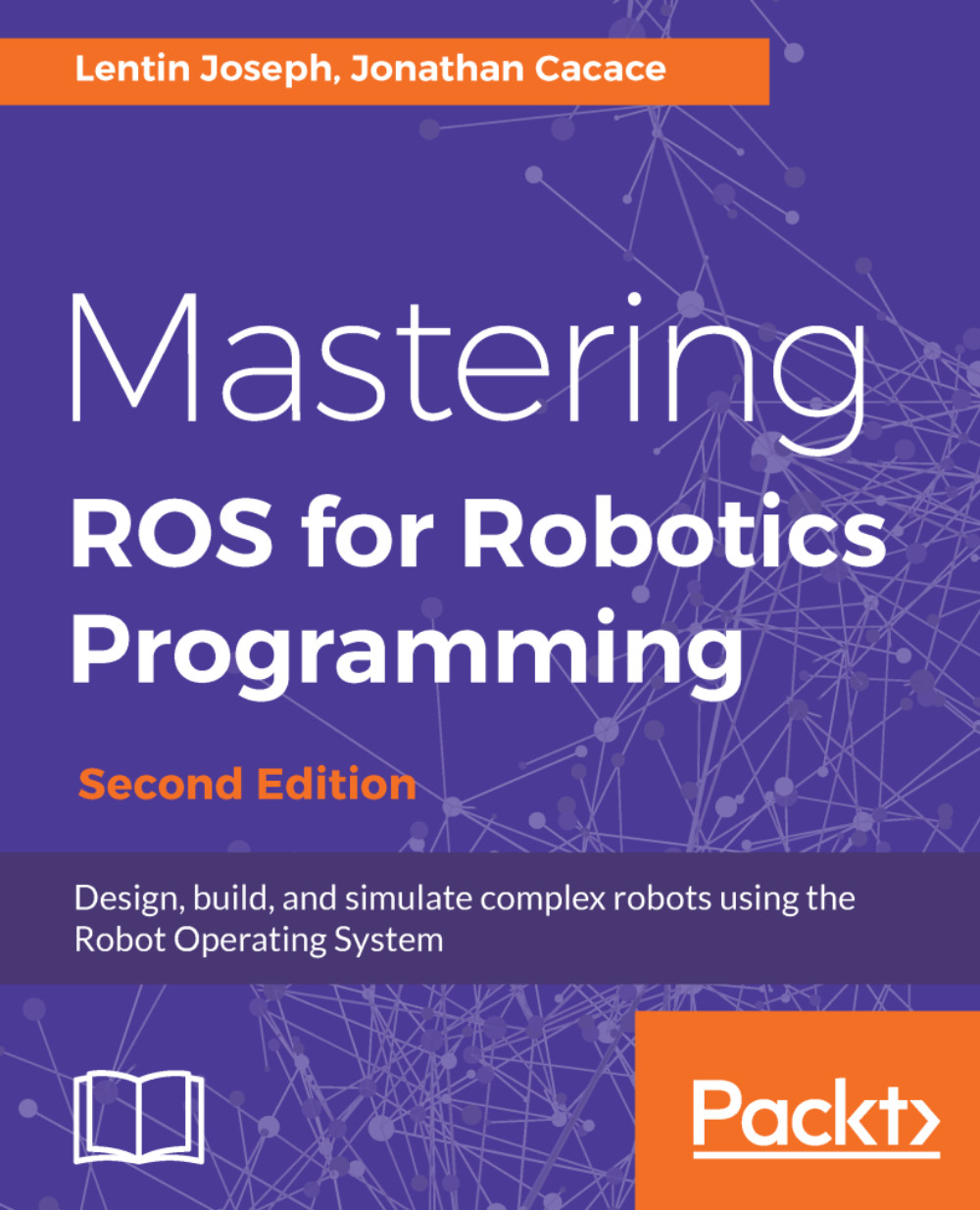Summary
After designing the robot, the next phase is its simulation. There are a lot of uses in simulation. We can validate a robot design, and at the same time, we can work with a robot without having its real hardware. There are some situations when we need to work without having a robot hardware. Simulators are useful in all these situations.
In this chapter, we were trying to simulate two robots, one was a robotic arm with seven-DOF and the other was a differential wheeled mobile robot. We started with the robotic arm, and discussed the additional Gazebo tags needed to launch the robot in Gazebo. We discussed how to add a 3D vision sensor to the simulation. Later, we created a launch file to start Gazebo with a robotic arm and discussed how to add controllers to each joint. We added the controllers and worked with each joint.
Like the robotic arm, we created the URDF for the Gazebo simulation and added the necessary Gazebo-ROS plugin for the laser scanner and differential drive mechanism...






























































